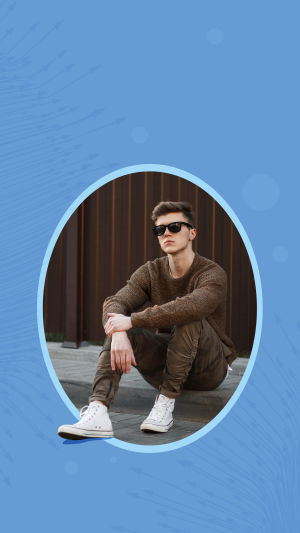In life, many people do not like to be photographed by others, and especially resist facing the camera. There are two main reasons for this situation:
First of all, it is influenced by the "exposure effect", also known as the "see more" effect, which is a psychological phenomenon that means that people prefer things that they often see and are more familiar with.
In the 1960s, the psychologist Zaronc once conducted an interesting experiment: he organized a group of subjects, showed them the graduation album of a certain school, and before reading, confirmed that they did not know and had never seen the graduation. For the people in the album, after reading the graduation album, let the subjects look at these photos. Some of these photos appear more than a dozen times, some appear more than twenty times, and some appear only once or twice. Afterwards, the subjects were asked to rate how much they liked the person in the photo. The experimental results showed that those who appeared the most in the photos were the most popular among the subjects, and this result was affected by the "exposure effect".
People who don’t like taking pictures usually feel that they are not in the mirror, which means that the pictures are uglier than the real person. To be precise, they think that the self in the picture is ugly than the self in the mirror. Generally speaking, people look in the mirror more often than they do. The more times I take pictures, the more I like myself in the mirror, and I don’t want to take pictures.
Secondly, it is affected by the "frozen face effect". The so-called "frozen face effect" was proposed by psychologist Robert Bost, which means that for the same person, the person in the video will be better than the person in the screenshot of the same video. Better-looking, simply to understand, is the same person, dynamic will look better than static. With the continuous development and evolution of human beings, the brain has become more accustomed to recognizing dynamic faces rather than static faces, so the static face in the photo is uglier, of course Taking pictures will be rejected.
Therefore, being afraid of the camera is a sign of lack of self-confidence. Self-confidence is not innate. It can be cultivated through hard work. Models dare to show themselves boldly in front of the camera. The main manifestation is in their walking posture. When ordinary people walk, they put their legs Straighten, knees and toes facing forward, the movements are neat and neat, and the legs are full of strength. From the front, you will appear tall, slender, and domineering, and from the side, you will appear to have a superior temperament because of your calm and firm steps.In addition, do the things you are good at or like to the extreme, even if you just run a 500-meter run every day, you will accumulate confidence little by little in each achievement event. Everyone is unique in this world. Those reasons that make you feel inferior, when God gave you, are not to make you inferior, but to make you more unique, beautiful and powerful.





